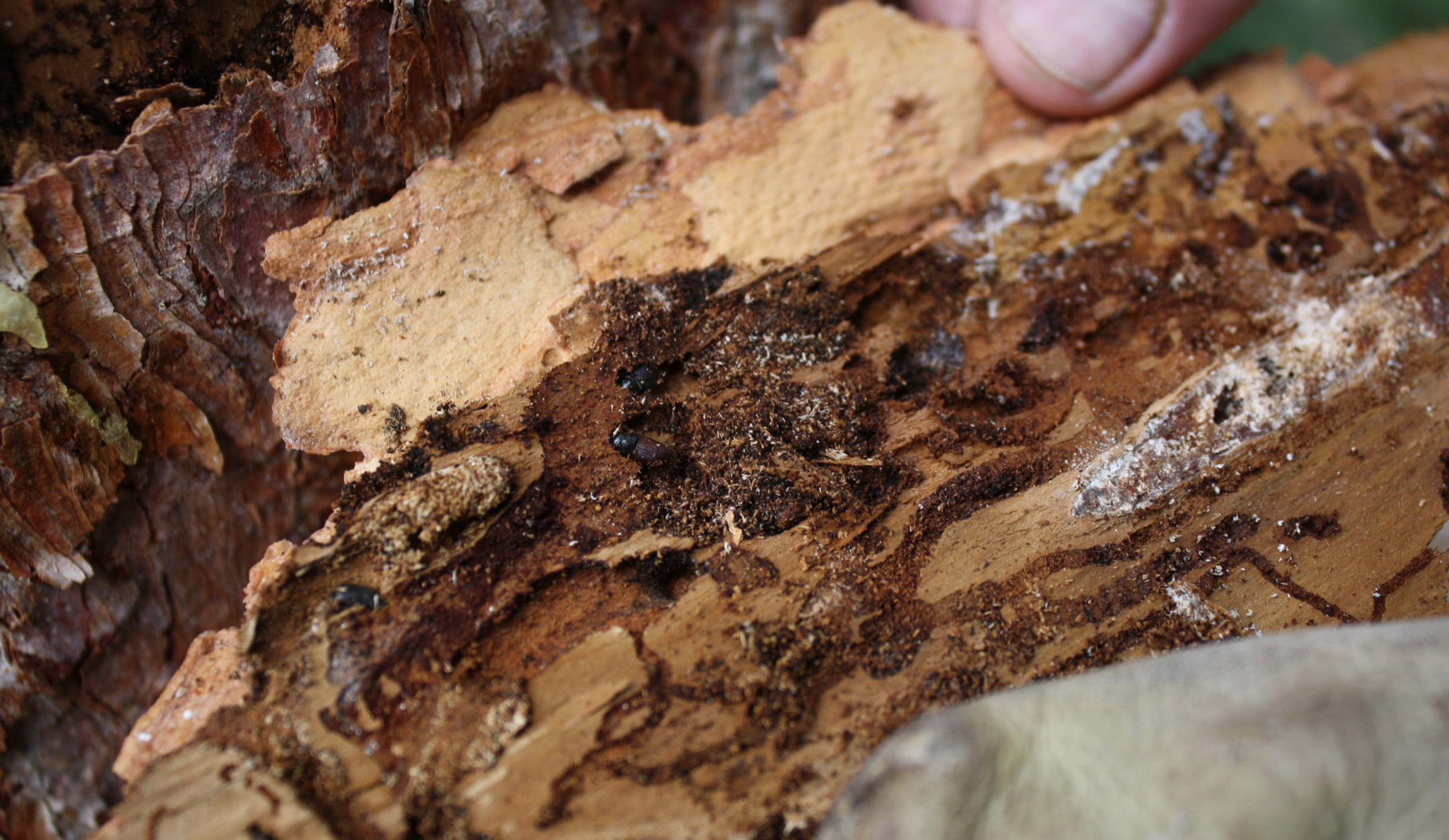Beetles are amongst the first animals to pair up with fungi. Evolutionarily, these mutualisms run deep into Earth’s past, around 200 million years ago. Even though many of these specialized mutualisms between the two groups of organisms represent a truly ancestral condition, we are still describing mutualisms that are new to us. In the field of entomology, these species interactions between beetles and fungi are getting loads of attention. Just over a year ago, new research emerged from Colorado State University, that delved into one of these beetle-fungal mutualisms. The experiments carried out in this publication revealed that the species of fungus (Leptographium abietinum) provides its beetle with not just one, but three fitness enhancing benefits.
The North American spruce beetle (Dendroctonus rufipennis) is an exceedingly successful organism which a rather large distribution throughout western United States and Canada. Like many other beetles, Dendroctonus rufipennis bores into large woody substrates, like living or dead softwood tree trunks. As its common name suggests, the North American spruce beetle specializes in utilizing spruce trees. Once they drill past the outer bark, they excavate tunnels parallel the wood grain on the inner bark. These tunnels are known as galleries, and soon become the new home to the adult beetle’s offspring.
If you uncover one of these galleries yourself, you will find fungi growing. Of course, if you know anything about fungi, you know that they thrive in these woody, dark and wet habitats. But the incidence of fungi living in these galleries is no coincidence. The vast majority of beetles with a similar life history have specialized appendages usually located on their heads called mycangia. A mycangium is a glorified word for a fungal spore pit. With these mycangia, gallery forming beetles disperse fungi into these woody habitats. Interestingly, instead of having mycangia, the North American spruce beetle disperses fungal spores using pits on their hardened protective forewing known as the elytra. Over millions and millions of years, natural selection has favored fungi with the greatest fitness enhancing qualities, since healthier beetles promote the dispersal of their fungal counterpart.
Dendroctonus rufipennis.
Thomas Davis and his team set off to unravel how Leptographium abietinum increases its host’s fitness. To do this, they utilized multiple competing hypotheses. They tested three possible fungal functions other publications hinted at:
(1.) The first and easiest to fathom is the nutrients fungi may provide beetle larvae. There are numerous papers that show gallery forming beetles receive nutritional benefits from their fungal symbiote. These fungi break down large, otherwise inaccessible carbon molecules into more simple, digestible sugars.
(2.) Competitive exclusion. Even outside entomology studies, there is a wealth of knowledge out there that shows certain species reduce the growth of pathogenic organisms simply by outcompeting them. For this interaction, these fungi dispersed by beetles may reduce the growth of bacteria and antagonistic fungi in these galleries that could result in larval death.
(3.) The third possible fitness enhancing function is the idea that symbiotic fungi may detoxify the host plant’s defensive compounds. This hypothesis would not make sense if these beetles only selected dead trees, but this is not the case. Living hosts can and will initiate chemical defenses against potential threats. These secondary compounds the plants produce is quite effective at killing beetle larvae and juveniles. Fungi may have the ability to reduce the effectiveness of these plant compounds.
Dendroctonus rufipennis and its fungal galleries
To their surprise, all of the competing hypotheses turned out to be true! This fungus had significantly higher levels of nitrogen, phosphorus and protein compared to the nearby woody tissue of the phloem. Larvae consuming the nutrient rich mycelia will mature faster compared to individuals consuming the phloem tissue alone.
Researchers growing the fungus in Petri dishes showed its inhibition of a destructive fungal pathogen called Beauveria bassiana. Leptographium abietinum didn’t stop Beauveria bassiana from growing completely, but enough to show ecological significance. Grown in the same Petri dishes, on average Leptographium abietinum colonized 61% of the resources available, while Beauveria bassiana colonized 39%. We have to remember that any reduction in pathogenic growth shows a benefit these beetles receive from their fungal mutualist.
One of the most synthesized secondary compound the Engelmann spruce produces, is a chemical known as 3-carene. This study tested the metabolism of 3-carene by Leptographium abietinum. 17 days after initial inoculation of Leptographium abietinum in a media laced with 3-carene, the concentration of the secondary compound was reduced by 63%.
Beauveria bassiana infected crickets.
Fungal-beetle mutualisms go way back, but just because these interactions are ancient, doesn’t mean humans know what these interactions actually behold. This new research shows the importance of using multiple hypotheses. Just think, these scientists could have published a paper that just studied one of these interactions. What if they had just found significant results showing the fungal mutualist enhances beetle fitness by increasing the load of available nutrients? We probably wouldn’t know that Leptographium abietinum reduces the growth of opportunistic pathogens and metabolizes the defensive compounds synthesized by the host plant for decades to come! These ecological interactions are intricate, so always remember that one right answer doesn’t fully encapsulate the millions of years of evolution taking place.






